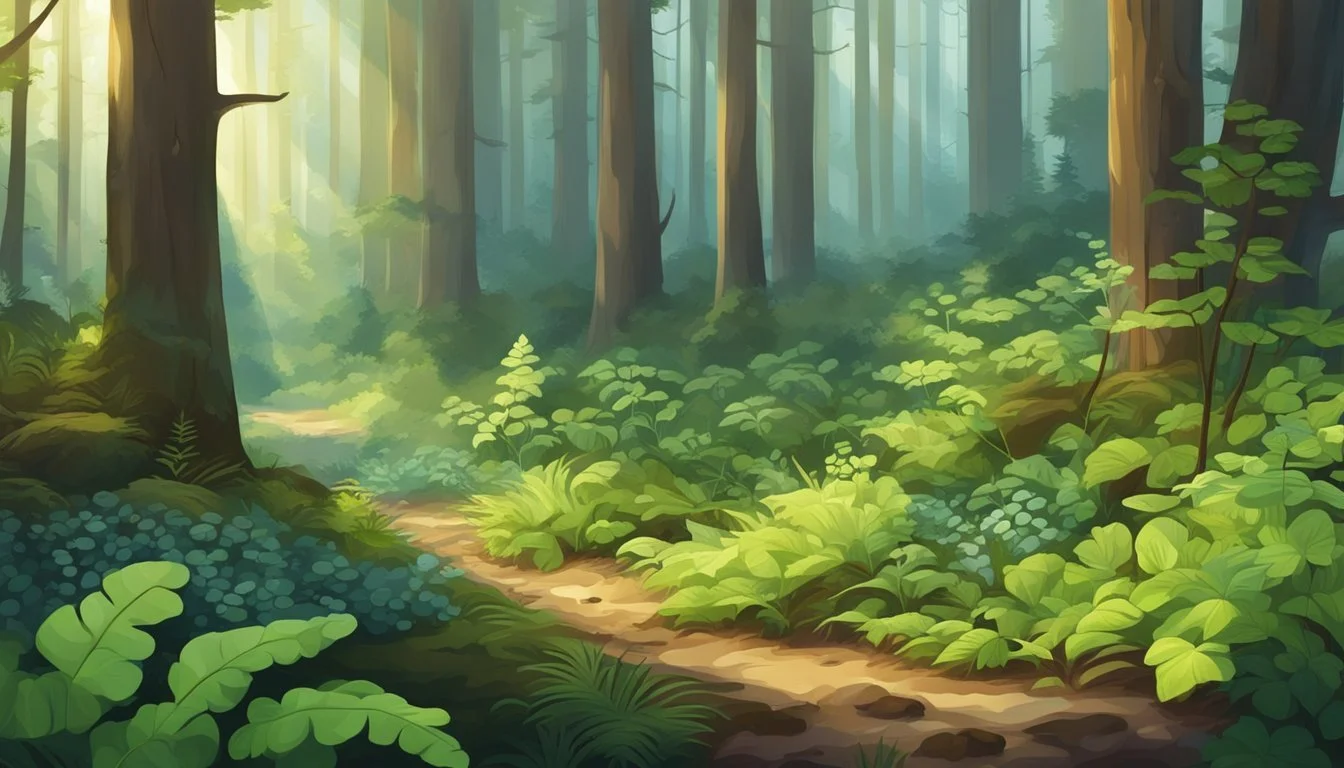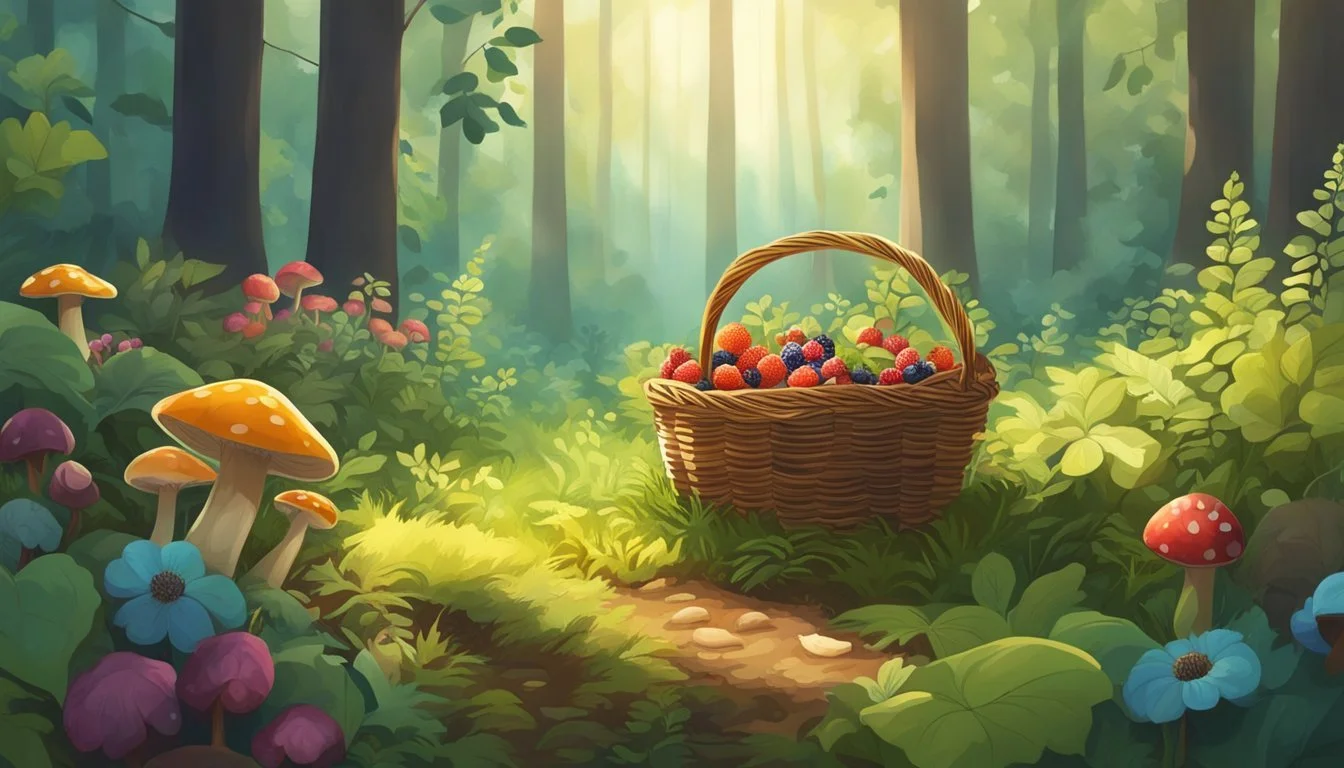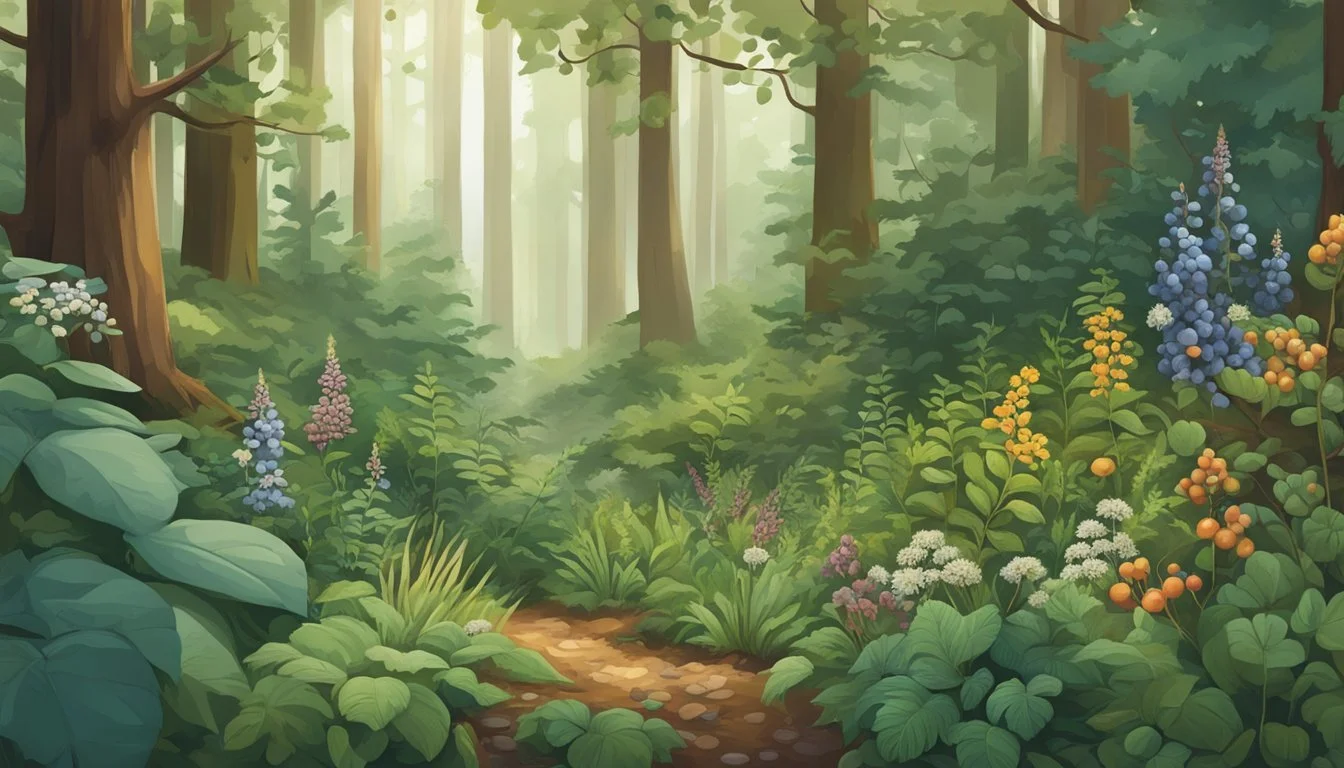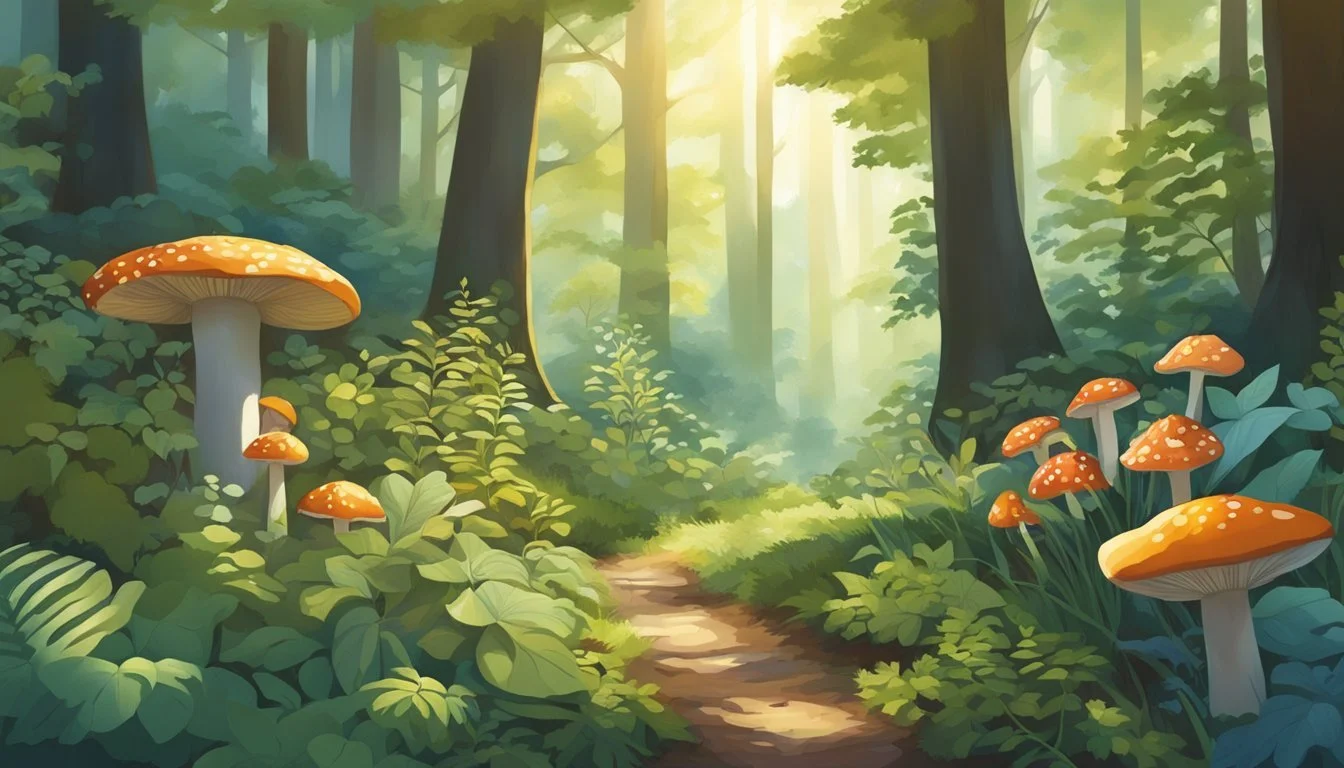Northwoods Native Edible Plants
A Guide to Foraging
The Northwoods region offers a diverse array of native edible plants waiting to be discovered by enthusiastic foragers. From the juicy wild strawberries and raspberries to the hearty nuts like walnuts and acorns, the Northwoods is a rich resource for anyone eager to explore nature’s bounty. This knowledge can transform an ordinary hike into an exciting foraging adventure, blending the joy of the outdoors with the pleasure of finding and harvesting wild edibles.
In this lush environment, one can find an impressive variety of mushrooms, such as morels, chanterelles, and hen of the woods, each with its unique flavor and culinary uses. The surrounding forests and wetlands are also home to wild asparagus and watercress, adding a touch of the gourmet to foraged meals. These plants not only provide valuable nutrition but also enrich the habitat for local wildlife, creating a thriving ecosystem.
Foraging in the Northwoods is more than just a fun outdoor activity; it’s a mission to connect with nature and understand the landscape. By learning to identify edible plants and their toxic look-alikes, foragers can ensure a safe and rewarding experience. Be it the serene beauty of wood anemones carpeting the forest floor or the challenge of finding the perfect mushroom, each outing is an opportunity to immerse oneself in the natural world and gain a deeper appreciation for the environment.
Getting Started with Foraging
Before venturing into the Northwoods to forage native edible plants, it’s important to understand both ethical and safety considerations. Knowing how to properly identify plants and follow local regulations ensures a rewarding and responsible foraging experience.
Foraging Ethics and Legal Considerations
Ethical foraging starts with respecting nature and local laws. Foragers need to be aware of local regulations that might require permits, especially on federal or state lands. For instance, there are limits on the amount of fruits and berries one can collect in places like the Apostle Islands.
Seeking permission is crucial when foraging on private property. Obtain clear permissions from landowners to avoid trespassing. Additionally, overharvesting can harm plant populations and ecosystems. Always take only what you need and never more than a small portion of any wild plant.
Another key point is to avoid spreading invasive species. Clean your gear and shoes before and after foraging to safeguard the local environment.
Safety and Identification
Safety in foraging is closely tied to accurate plant identification. Mistaking a poisonous plant for an edible one can lead to serious health risks. Foragers should utilize trusted guidebooks and avoid relying solely on apps, which may not always provide accurate information.
Participating in local plant walks can be immensely helpful for beginners. These walks, often led by experienced foragers, provide hands-on learning opportunities. Knowledge of poisonous look-alikes is critical—many edible plants have toxic doppelgangers.
Foraging safely means being 100% sure of what you're harvesting. Equip yourself with high-quality research materials and take your time to learn the best practices for identifying and handling native plants.
Notable Edible Plants of the Northwoods
The Northwoods region is home to a diverse array of edible plants, ranging from towering trees to delicate ferns. This section highlights notable species, focusing on their foraging potential and characteristics, to help both novice and experienced foragers identify and safely harvest these valuable resources.
Trees and Shrubs
Acorns: Found in oak trees, acorns are a versatile food source. White oaks (Quercus alba) and red oaks (Quercus rubra) produce the most palatable acorns. After proper leaching to remove tannins, acorns can be ground into flour or used whole in various recipes.
Serviceberries: Also known as Juneberries, serviceberries (Amelanchier spp.) bear sweet, edible berries. These trees and shrubs thrive in well-drained soils and produce fruit that can be eaten fresh or used in jellies and pies. Their berries ripen in early to mid-summer.
Evergreen Huckleberry: These shrubs offer small, dark berries that are both nutritious and flavorful. Common in coniferous forests, the berries can be consumed raw, dried, or as a part of baked goods. They require minimal processing and are often a forager's favorite.
Wild Berries and Fruits
Blueberries: Blueberries (Vaccinium spp.) are abundant in the Northwoods and are prized for their sweet flavor and high nutrient content. These berries grow well in acidic soils and can be harvested from late summer to early fall. Fresh, they are delicious, but they can also be dried or used in cooking.
Wild Strawberries: Smaller and more aromatic than their cultivated counterparts, wild strawberries (Fragaria vesca) grow in open woodlands and grassy areas. Both the fruits and the leaves are edible, with fruits appearing in late spring to early summer. These berries are perfect for fresh eating or making jams.
Cranberries: American cranberries (Vaccinium macrocarpon) grow in boggy areas and need consistently moist soil. Their tart red fruits are harvested in the fall and are famous for making sauces and relishes. The plants’ evergreen leaves provide visual interest year-round.
Herbaceous Plants and Ferns
Ramps: Known as wild leeks (Allium tricoccum), ramps have a strong garlicky flavor. They grow in moist, shady areas and are harvested in spring. Both the leaves and bulbs are edible and can be used in cooking to add robust flavor to dishes.
Wild Asparagus: Wild asparagus (Asparagus officinalis) shoots are collected in spring. These herbaceous plants are often found at the edges of woods and fields. Tender, young shoots can be cooked similarly to cultivated asparagus and are valued for their crisp texture.
Fiddleheads: The young, coiled fronds of certain fern species, known as fiddleheads, are edible and highly nutritious. Common edible varieties include the ostrich fern (Matteuccia struthiopteris), which grows in wet, shaded areas. They must be cooked thoroughly to be safe for consumption.
Fungi and Mushrooms
Chanterelles: Chanterelle mushrooms (Cantharellus cibarius) are easy to identify due to their distinctive yellow-orange color and trumpet shape. They grow in forested areas, often near oak and conifer trees. Chanterelles are highly prized for their mild, peppery taste and are great sautéed.
Morels: Morel mushrooms (Morchella spp.) are highly sought after by foragers for their unique appearance and exquisite flavor. Typically found in spring, morels often grow near ash, elm, and apple trees. These mushrooms must be cooked before eating to neutralize any toxins.
Chicken of the Woods: This striking mushroom (Laetiporus spp.) resembles the texture of chicken meat when cooked. Found on dead or dying trees, it appears as bright orange or yellow shelf-like growths. This mushroom is versatile in the kitchen but should be cooked thoroughly to ensure safety.
Each subsection offers practical information and key characteristics to help identify and use these native plants effectively, ensuring a successful and safe foraging experience.
Harvesting Techniques
To effectively gather Northwoods native edible plants, it's essential to employ sustainable practices and understand proper preparation and preservation methods.
Sustainable Harvesting
Ensuring the long-term availability of native plants relies on sustainable harvesting practices. Foragers should only take what they need, often just 20% of the available plants to allow the population to regenerate.
Respect protected areas: Check local regulations as some areas may restrict foraging.
Avoid damaging plants: Use sharp, clean tools for cutting to minimize harm.
Rotate Harvesting Locations: This helps prevent overharvesting in any one area.
Harvest in Season: Gathering plants at their peak ensures quality and helps maintain balance in the ecosystem.
These practices help sustain plant populations and the ecosystem.
Preparation and Preservation
Proper preparation and preservation of harvested plants not only enhance their flavor but also extend their usability.
Cleaning: Rinse plants thoroughly to remove dirt and insects.
Blanching: Some plants, like wild asparagus, benefit from blanching to retain their color and texture.
Drying: Herbs and mushrooms can be air-dried or using a dehydrator.
Storage: Use airtight containers or vacuum-seal bags to preserve dried or frozen plants, keeping them in a cool, dark place.
By adhering to these methods, foragers can enjoy the benefits of Northwoods native edible plants throughout the year.
Ecological Impact and Conservation
Northwoods native edible plants play a crucial role in maintaining ecological balance and promoting conservation efforts. The discussion focuses on how native species support local biodiversity and the challenges posed by invasive species.
Native vs. Invasive Species
Native plants are integral to Northwoods ecosystems. They provide essential resources for local wildlife, including food and habitat. For instance, native berry-producing shrubs like Vaccinium spp. support birds and small mammals, while native pollinators benefit from flowering plants such as Trillium grandiflorum.
In contrast, invasive species disrupt these established relationships. Non-native plants, such as Rhamnus cathartica (common buckthorn), outcompete native flora, altering the forest floor dynamics. This leads to reduced biodiversity and negatively impacts soil health and water cycles. Conservation efforts involve removing invasive species to restore native plant populations and improve ecological health.
Promoting Local Biodiversity
Promoting biodiversity through the conservation of native plants is vital. Native species ensure a stable and resilient ecosystem by supporting diverse habitats and food sources. Plants like Arisaema triphyllum (jack-in-the-pulpit) contribute to the rich tapestry of the forest's understory, aiding in soil stability and providing cover for small animals.
Conservation strategies often include planting native species and creating protected areas to preserve natural habitats. Educational programs highlight the benefits of native plants in sustaining pollinators and other wildlife. These efforts help maintain the ecological integrity of the Northwoods, ensuring the forest remains a thriving habitat for future generations.
Cultural and Historical Significance
The Northwoods is rich with native edible plants that have played a vital role in the lives of Indigenous peoples and early settlers. These plants were not only sources of sustenance but also integral to cultural traditions and historical foraging practices.
Indigenous Knowledge and Uses
Indigenous peoples, including Native Americans of the Pacific Northwest and the northern United States, have long relied on the native plants of the Northwoods. Traditional uses of these plants included food sources, medicinal purposes, and ceremonial uses. For instance, wild berries like raspberries and huckleberries were often dried and stored for winter.
Mash-ups of different berries, such as those described by Mary in her memories, were common. Plants such as the Wood Anemone, found alongside moist forest paths in Wisconsin and Michigan, served as both an aesthetic delight and a part of medicinal traditions. Medicinal plants were commonly used to treat ailments, emphasizing their dual role in nutrition and health.
Historical Foraging Practices
Historical foraging practices highlight the interaction between early settlers and the rich flora of the Northwoods. Pioneers and settlers from states like Oregon and Washington documented extensive use of native plants that were similar to those used by Native Americans. Canoe travel facilitated the spread of botanical knowledge between regions, particularly in the movement of settlers across places like the Pacific Northwest and British Columbia.
Wild vegetables and tea substitutes were commonly foraged, adding diversity and nutrition to the settlers' diets. Such practices not only ensured survival but also integrated aspects of Indigenous knowledge into pioneer life, illustrating a convergence of cultural wisdom regarding natural resources.
Nutritional and Medicinal Benefits
Native edible plants in the Northwoods offer substantial nutritional and medicinal properties. These plants are rich in vitamins, antioxidants, minerals, and fiber, which contribute to overall well-being, while their medicinal properties include remedies for common ailments like sore throats and headaches.
Health Benefits of Wild Edibles
Wild edible plants are packed with essential nutrients. Many are excellent sources of vitamin C, which is crucial for immune function and skin health. For instance, berries such as elderberries and wild strawberries, which ripen in the summertime, are rich in this vitamin.
These plants also contain significant amounts of antioxidants and minerals like iron and magnesium. Antioxidants help combat oxidative stress, reducing the risk of chronic diseases. Additionally, many wild edibles are high in fiber, promoting digestive health. Roots like wild carrots and dandelions serve as good examples, providing both nutritional and digestive benefits.
Home Remedies and Traditional Medicines
Native edible plants have long been used in traditional medicine to treat a variety of ailments. Herbs such as mint and yarrow can be used to alleviate headaches and sore throats. Preparing teas from these plants is a common practice.
Certain plants, like the burdock root, are known for their detoxifying properties. They are often used to cleanse the blood and enhance organ function. Another example is the common elderberry, which is used in syrups and extracts to boost the immune system and manage colds.
Field guides often recommend indigenous plants for topical treatments. For example, the sap from jewelweed is applied to relieve skin irritations and itching. These traditional remedies are still in use today, showcasing the practical medicinal value of wild edibles.
Foraging Experiences and Education
Foraging in the Northwoods offers both a personal connection to nature and an opportunity to learn about native plants. By sharing experiences and participating in educational workshops, foragers can deepen their knowledge and enhance their skills.
Sharing Foraging Experiences
Foragers in the Northwoods often share their experiences to build a sense of community and spread valuable knowledge. Local groups and online forums are common places where these stories and tips are exchanged. Farmers and enthusiasts may also document their findings with clear photos and detailed notes on plant id, harvesting, and preparation techniques.
By learning about plants like Meadow Anemone and Prairie Smoke, participants not only gain practical skills but also develop an appreciation for the region's perennial green foliage. These shared experiences help individuals recognize and avoid harmful plants, ensuring a safe and rewarding foraging adventure.
Foraging Workshops and Education
Educational opportunities, such as workshops and guided tours, play a crucial role in teaching aspiring foragers the essentials of safe and ethical foraging. Programs like those offered by the Hubbard County University of Minnesota Extension Office collaborate with places like Itasca State Park to offer practical, hands-on learning experiences.
These workshops may cover topics including plant identification, sustainable harvesting practices, and the prevention of spreading invasive species. Experts like Samuel Thayer emphasize building cumulative knowledge by starting with a few easily identifiable plants. Learning environments often feature diverse habitats like wetlands and forests, offering participants varied experiences and an in-depth look at native plants.








